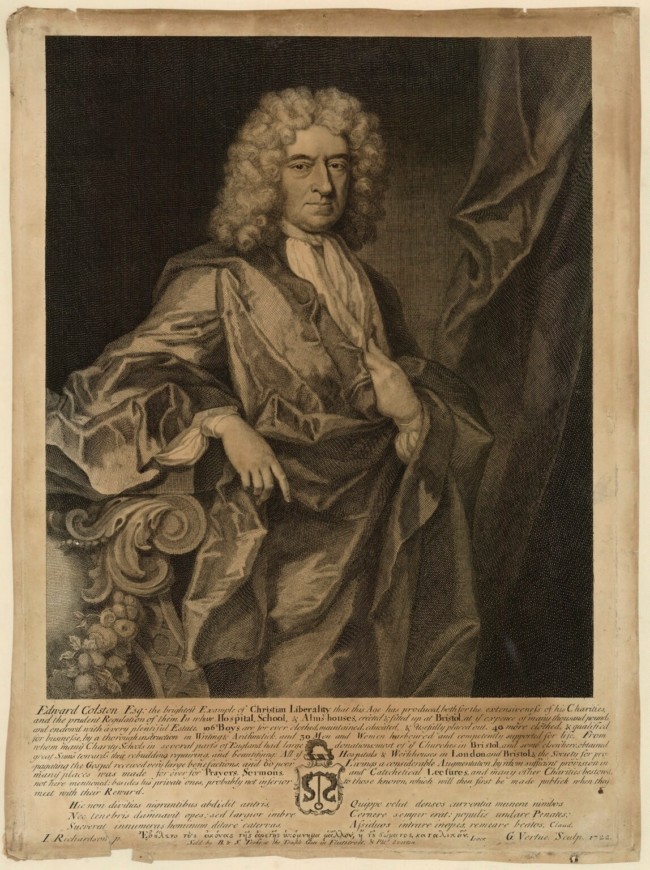Edward Colston the moral saint and father of Bristol: why the statue to a slave trader was built 170 years after his death

For some time campaigners wanted to add a ‘corrective’ plaque on the statue of Edward Colston (2 November 1636 – 11 October 1721). Last week, protestors went further, pulling down the statue to a man who traded in wine, fruit and slaves, and tossing it into Bristol Harbour. Mayor of Bristol, Marvin Rees, said he felt no “sense of loss”, but that the statue made in 1895 would be retrieved and it was “highly likely that the Colston statue will end up in one of our museums.”
Like many, I’m interested in why and how the statue ever came to exist, a totem bearing the legend: “Erected by citizens of Bristol as a memorial of one of the most virtuous and wise sons of their city.” Edward Ball investigates:
Despite the claims on the statue of Edward Colston and local myth, the idea of having a statue of to memorialise the ‘great benefactor’ did not come from popular demands by the “citizens of Bristol”. It was in fact the brainchild of one person, James Arrowsmith, president of the Liberal dominated Anchor Society. Arrowsmith was a wealthy businessman who owned the largest printing and publishing company in the city. In a speech to the Colston Fraternal Society in October 1893 he proposed that a statue should be erected and in March of the following year a fund raising committee was set up by officials of the four Colston commemoration societies, with Arrowsmith as honorary secretary.
The money did not pour in. Even with lots of letters to the local paper, fundraisers and campaigning among the monied classes, the target was only met when an anonymous donor rumoured to be one James Arrowsmith dug deep and deeper to make his dream a reality. And so it was that a few wealthy Victorians with an agenda to create and promote a sense of tradition erected a statue to the “father of the city”, a “merchant prince” and a “moral saint’.
The unveiling was led by the Mayor and Bishop of Bristol, surrounded by the business and political elite of the city. The mayor’s speech concentrated on Bristol’s maritime history of mercantilism and Colston’s philanthropy. There was, of course, no direct mention of Colston’s leading role in the slave trade through his management positions and investments in the Royal African Company. The same had been true of the whole fund-raising campaign. However, the Mayor made one major indirect reference in his speech in stating that Colston’s “business was mainly with the West Indies”; essentially code for involvement in slavery and the slave trade. It is interesting that in 1895 there was at least some clarity about this aspect, albeit indirect. This should be compared to clumsy attempts by apologists over a century later to ‘airbrush the history’ by portraying Colston as merely an Iberian, Mediterranean or Levant merchant with no direct connections to trans-Atlantic slavery.
The mayor’s right – the thing belongs in a museum with other statues of long dead gods, saints and angels. The accompanying note will explain its history.
Spotter: Bristol Radical History Group
Posted: 9th, June 2020 | In: Key Posts, News Comment | TrackBack | Permalink


